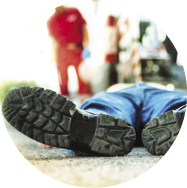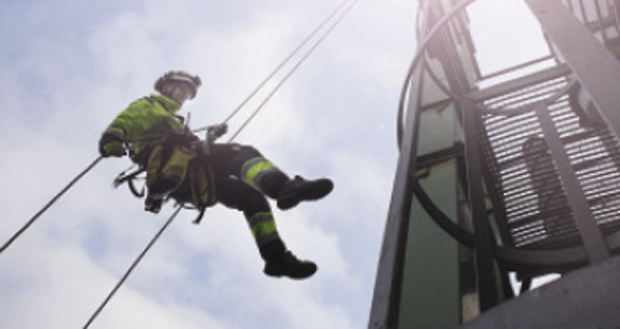 Lone workers are those who work by themselves without close or direct supervision, and they can be found in many working environments.
Lone workers are those who work by themselves without close or direct supervision, and they can be found in many working environments.
EXAMPLES OF LONE WORKING INCLUDE:
- People working alone in premises, such as shops or kiosks
- Home workers
- People working outside of normal working hours, such as cleaners, security staff, maintenance or repair staff
- Those who work separately from others, such as research staff, or those in leisure centres, warehouses etc
- Agricultural and forestry workers
- Service workers, such as postal staff, social workers, doctors and nurses, drivers, estate agents, etc
- Those involved in trades such as electrical repairs, plumbing, lift repairs, painting and decorating etc.
- Working at or near exposed electricity conductors
- Working in confined spaces where there may be toxic materials, or lack of oxygen or other risks
- Undertaking health or social care visits to unpredictable clients
RECOMMENDATIONS FOR EMPLOYERS
- When carrying out risk assessments involve staff or their representatives
- Put relevant control measures in place – and periodically check that they are sufficient to manage the risk
- If a lone worker works at another employer’s workplace, that employer should inform the lone worker’s employer of any risks and the controls in place
- If working alone is not able to be conducted safely, help or back up should be provided
- Review risk assessments annually, or when there are any significant changes in working practice or following an incident
WHEN CARRYING OUT THE RISK ASSESSMENT, THE FOLLOWING QUESTIONS SHOULD BE ASKED, TO ENSURE ADEQUATE CONTROL MEASURES ARE PUT IN PLACE:
- Is there safe access and egress for one person?
- Can one person handle any necessary temporary access equipment, such as portable ladders?
- Can one person handle all the necessary machinery and goods?
- Are any chemicals or hazardous substances used that may pose a risk to the worker?
- Does the work involve lifting objects too large for one person?
- Is there a risk of violence?
- Are young, pregnant or disabled workers particularly at risk if they work alone?
- If the lone worker’s first language is not English, are suitable arrangements in place to ensure clear communication, especially in an emergency?
- Do lone workers have any medical conditions that make lone working unsuitable?
- Can suitable levels of supervision be provided?
- What happens if the lone worker become ill, has an accident or there is an emergency including first aid arrangements?
- Are special lone working alarms or communication devices needed?
The main areas of health and safety law relevant to lone working are:
- Confined Spaces Regulations 1997
- Electricity at Work Regulations 1989
- Health and Safety at Work etc. Act 1974
- Health and Safety (First Aid) Regulations 1981
- Lifting Operations and Lifting Equipment Regulations 1998 (LOLER)
- Provision and Use of Work Equipment Regulations 1998 (PUWER)
- Reporting of Injuries, Diseases and Dangerous Occurrences Regulations 2013
- Workplace (Health, Safety and Welfare) Regulations 1992.
 2016 – A manufacturing company was fined £1 million after a lone worker was crushed to death by falling machinery.
2016 – A manufacturing company was fined £1 million after a lone worker was crushed to death by falling machinery.
The CNC milling machine had been lifted using jacks and placed on skates; the employee, working alone, was using an angle grinder to cut and remove fixings when the milling machine overturned, crushing him.
The employer had not ensured that employees had proper training, had not assessed the risks and the work was not properly planned. This resulted in an unsafe system of work being used, with fatal consequences.
The employer pleaded guilty to breaching Section 2(1) of the Health and Safety at Work etc. Act 1974 and Regulation 3(1) of the Management of Health and Safety at Work Regulations 1999. They were fined £1 million with costs.





